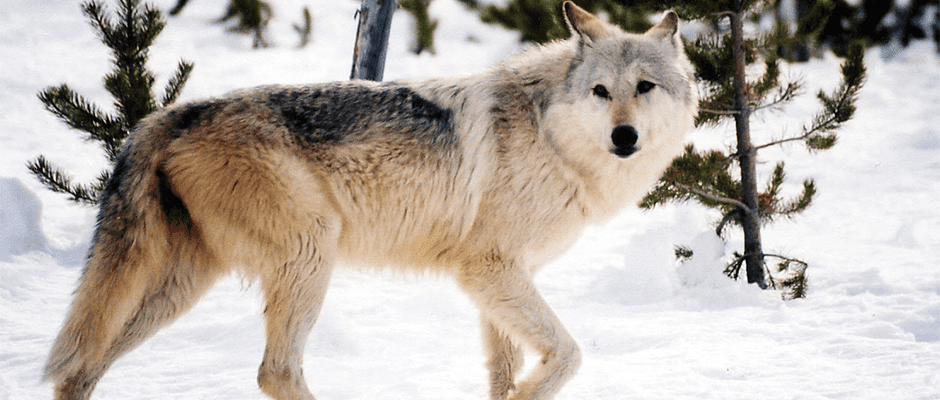Share this article
British Columbia may expand aerial wolf removals
On Feb. 1, Premier Christy Clark announced the British Columbia government’s major investment in a comprehensive caribou recovery program which builds on existing efforts, like a five-year grey wolf removal project, and includes five key components: critical caribou habitat protection and restoration; maternal penning; predator management; research and monitoring; increased compliance and enforcement.
In an attempt to slow the decline of woodland caribou (Rangifer tarandus caribou), the B.C. government began a five-year grey wolf (Canis lupus) removal project in 2015 as part of a comprehensive management strategy. Last October, science advisors for the B.C. government recommended expanding wolf management by limited aerial removals to include wolf packs that overlap with caribou habitat in the Revelstoke Shuswap Region.
The Next steps for Southern Mountain Caribou recovery in planning Unit 3A, the Revelstoke Shuswap Region acknowledges that previous management action in the region – which did not include wolf removals – have stemmed population decline but have not resulted in an increase in caribou numbers, thus leading to the recommendation to initiate wolf removals. The report suggests that the infrequent removal of targeted wolf packs in the region – rather than blanket wolf removal – could contribute to an increase in caribou populations when combined with other management actions. The report also recommends protecting more low-elevation habitat, continuing the use of maternity pens, and expanding mountain lion, moose, and deer hunting.
Woodland caribou in B.C. are currently listed as threatened under the Species At Risk Act (SARA). Habitat loss and alteration is considered the largest threat to local populations of caribou. Increased predation as a result of habitat alteration has also contributed to population declines. Under SARA, caribou are designated as needing special management actions because of declining population trends. Over two million hectares of caribou habitat are protected throughout British Columbia. Habitat recovery is the long term goal of the province, but until the disturbed habitat has had a chance to recover, the province has utilized direct and indirect management of predators to avoid further population declines in the short term.
The wolf removal program has been a point of controversy since its inception. In Jan. 2016, the Pacific Wild and Valhalla Wilderness Society filed a petition against the British Columbia Ministry of Forests, Lands and Natural Resources Operations challenging the legality of the program, and following the proposal to expand the program, several environmental NGOs expressed their concerns in a Collaborative Wolf Media Release.
In an email from the Ministry, a representative said, “The province recognizes the recovery of caribou is a complex task. Complex relationships between habitat, alternate prey, predators, land management and caribou ecology make this a challenging task.”
One of the main objectives laid out in the Ministry’s Management Plan for the Grey Wolf (Canis lupus) in British Columbia, released in Apr. 2014, is “to manage specific packs or individuals where predation is likely preventing the recovery of wildlife populations threatened by wolf predation.” Using a ‘two-zone management strategy,’ wolves in most areas will maintain their ecological roles and populations are controlled through sustainable hunting and trapping. Aerial wolf removal is currently only conducted in the South Selkirk Mountains and the South Peace areas. If the zones for the program are expanded, wolves in the Revelstoke-Shuswap region would also be included in the aerial hunts.
Local caribou populations in the South Selkirk and the South Peace areas received attention from the Ministry in Jan. 2015. Officials from B.C., the state of Washington and Idaho, First Nations, the U.S. Forest Service, and the U.S. Fish and Wildlife Service collaborated to investigate the decline of the South Selkirk caribou. The research project indicated that wolves were responsible for killing 11 percent of the herd in the previous 10 months. In the South Peace, at least 37 percent of all adult mortalities were linked to wolf predation. Plans were developed by the Ministry to remove 24 wolves from South Selkirk and up to 120-160 from the South Peace “by shooting them from a helicopter before snow melt.”
The wolf removal program was carried out again in 2016. Based on results for the two years of wolf removal in the South Peace, the B.C. government reported increased survival for caribou calves from the Klinsa Za maternal penning project operating there. The five-year wolf removal project is set to be evaluated in 2020.
Read TWS’ Technical Review on Management of Large Mammalian Carnivores in North America.
Header Image: ©USFWSmidwest








